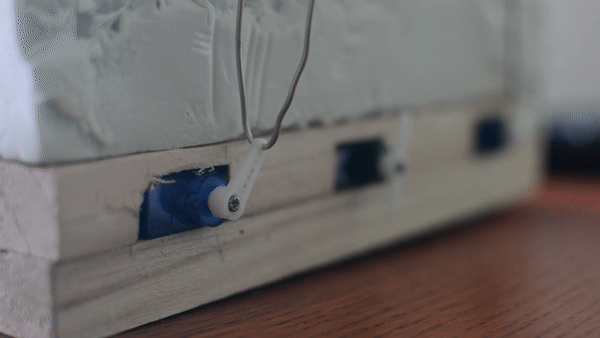Build
The third prototype will be the last for this study and will help to conclude design guidelines for future studies. This version will be evaluated by one other group of users and a group of experts (physiotherapists). The feedback gathered via the user tests of the second prototype will serve to make the necessary improvements for this third prototype.
First off I wanted to make this version look better and more finished. With the last version the loose parts could be observed and wires hung loosely attached. In this version the the body will be placed inside a box, closing off the side from being looked at. All internal cabling and the Arduino are then fixated inside the box leaving only a USB cable for power to exit the device.
Besides making the device look more like a finished product, I wanted to add the experience of muscles. Until now it was merely a static object only giving lights as feedback to user input. To do so I added a static and a dynamic part. For starters, to add more support to the body I added extra padding from Polystyrene to the side. This is needed to add the dynamic muscle simulation. A thick plastic sheet is placed over the body and attached to servo motors on one side (see The Hardware for more information). Whenever the hernia is found and massaged, the servo’s will pull tight the plastic sheet so there is more inside resistance when massaging. This is meant to simulate the cramping of the muscles when a real patient experiences pain. Especially when the practitioner massages with too much force, the system will activate.
As a last important addition the system should be able to receive multiple inputs at once. Until now the system was able to only register a single touch at a time (you can read in section The Software why). So as an important improvement for this build I wanted to enable the system to register multiple inputs, allowing users to better explore and grasp the intentions of the system much faster.
Observations
A first thing that is noticed quickly during this third round of user tests, is the fact that the servo’s make a lot of noise. This has the effect of directing the users to the location of the hernia very quickly, but it is not an intended effect. As can be read in The Software it is an intentional choice to leave out any auditory feedback. Furthermore it distracts the user and decreases the immersive value of the experience.
It is currently not possible to have the vertebrae torque during the massage.
Recommendations
